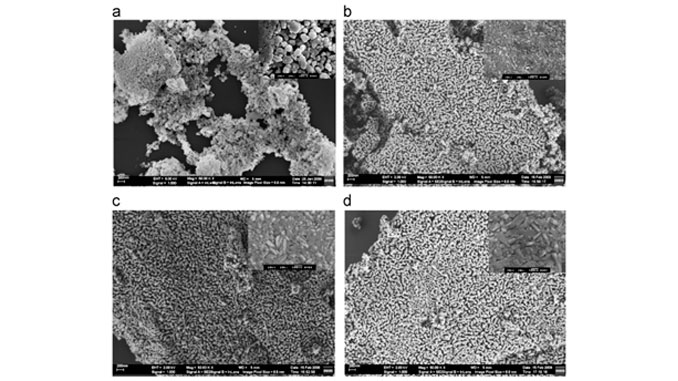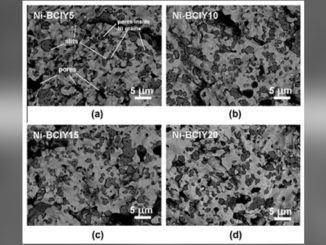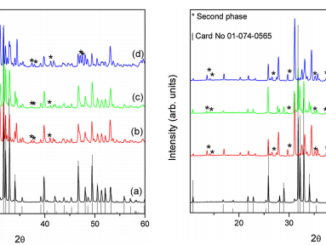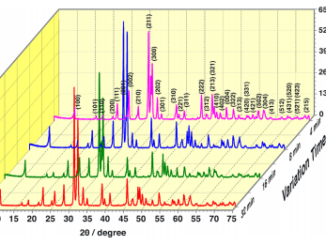
Writers: E.C. Aguiar; M.A. Ramirez; F. Moura; J.A. Varela; E. Longo; A.Z. Simões
Keywords: A. Ceramics; B. Chemical syntheses; B. Powder metallurgy; C. X-Ray diffraction
Abstract: This paper describes research on a simple low-temperature synthesis route to prepare bismuth ferrite nanopowders by the polymeric precursor method using bismuth and iron nitrates. BiFeO3 (BFO) nanopowders were characterized by means of X-ray diffraction analyses, (XRD), Fourier transform infrared (FT-IR) spectroscopy, Raman spectroscopy (Raman), thermogravimnetric analyses (TG-DTA), ultra-violet/vis (UV/Vis) and field emission scanning electron microscopy (FE-SEM). XRD patterns confirmed that a pure perovskite BiFeO3 structure with a rhombohedral distorted perovskite structure was obtained by heating at 850 °C for 4 hours. Typical FT-IR spectra for BFO powders revealed the formation of a perovskite structure at high temperatures due to a metal–oxygen bond while Raman modes indicated oxygen octahedral tilts induced by structural distortion. A homogeneous size distribution of BFO powders obtained at 850 °C for 4 hours was verified by FE-SEM analyses.
See PDF: Low-temperature synthesis of nanosized bismuth ferrite by the soft chemical method
DOI: 10.1016/j.ceramint.2012.06.014




